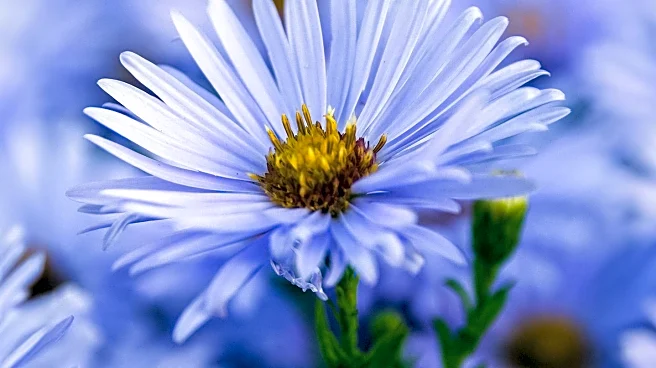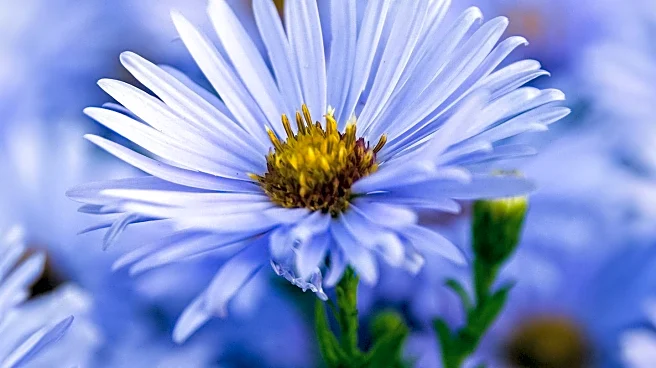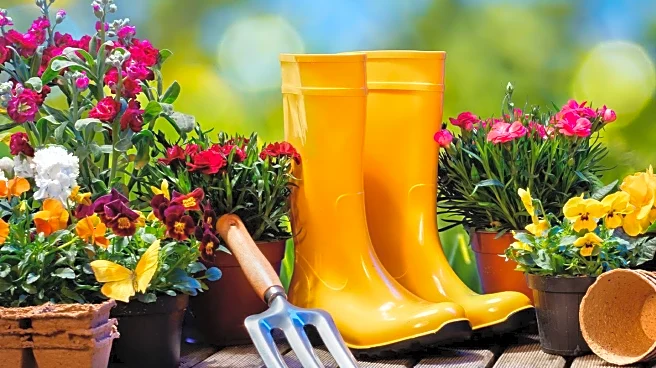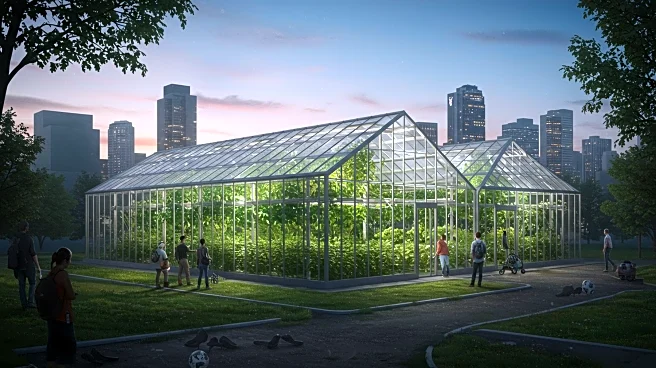What is the story about?
What's Happening?
Asters, commonly known as Michaelmas daisies, are gaining renewed interest among gardening enthusiasts for their late-season blooms. Despite initial reservations about their appearance, asters are recognized for their adaptability and ease of growth. They thrive in both part shade and full sun, requiring minimal maintenance as long as they are not exposed to drought or overly wet conditions. The renewed interest in asters is partly due to their ability to fill garden gaps during autumn, providing vibrant colors when other plants have faded. Notable varieties include Aster pyrenaeus 'Lutetia' and Symphyotrichum novi-belgii 'Violetta', which offer unique shades of lilac and purple. The influence of Dutch garden designer Piet Oudolf, known for his naturalistic planting style, has also contributed to the popularity of asters, particularly in contemporary garden designs.
Why It's Important?
The reconsideration of asters highlights a shift in gardening practices towards embracing plants that offer seasonal diversity and require less maintenance. This trend reflects a broader movement in horticulture that values sustainability and adaptability, allowing gardeners to create visually appealing spaces with minimal environmental impact. Asters' ability to thrive in various conditions makes them an attractive option for gardeners looking to enhance their landscapes without extensive resources. Additionally, the aesthetic appeal of asters during autumn provides an opportunity for gardeners to extend the visual interest of their gardens beyond the typical growing season, contributing to a more dynamic and engaging outdoor environment.
What's Next?
As gardeners continue to explore the potential of asters, there may be increased interest in experimenting with different varieties and integrating them into diverse garden designs. This could lead to a broader acceptance of asters in both private and public gardens, encouraging more sustainable gardening practices. The influence of designers like Piet Oudolf may inspire further innovation in garden layouts, incorporating asters alongside other late-blooming plants to create harmonious and visually striking landscapes. Gardeners may also seek to educate themselves on the best practices for cultivating asters, ensuring their successful integration into various garden settings.
Beyond the Headlines
The growing popularity of asters may also reflect a cultural shift towards appreciating the beauty of nature's cycles and the importance of biodiversity in garden spaces. As gardeners become more attuned to the changing seasons, there is potential for increased awareness of the ecological benefits of diverse plantings, including supporting pollinators and enhancing soil health. This could lead to a more holistic approach to gardening that prioritizes ecological balance and sustainability, fostering a deeper connection between people and their natural environments.
AI Generated Content
Do you find this article useful?















